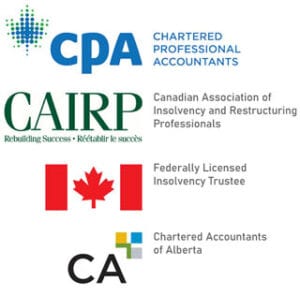PURPOSE OF A PROPOSAL
A Consumer Proposal is intended to provide individuals who wish to avoid bankruptcy with an option to obtain relief from overwhelming debt and/or payments and allow them to make more manageable payments toward that debt without being pursued by creditors or plagued by collection actions.
-
Step 1 – Meet with a Trustee / Proposal Administrator
In order to get started, you need to meet with a Licensed Insolvency Trustee who can review your situation and determine how or if your income and personal situation will enable you to make payments. Depending on your financial ability to make payments, a Consumer Proposal may or may not be a viable option for you.
In order to assess your situation, your Licensed Insolvency Trustee will ask you to provide a list or summary of the amounts you owe (your debts), what you own (your assets), the number of individuals or dependents in your family, your household income and monthly living expenses. Depending on your situation, you may, in addition to the possibility of a Consumer Proposal, want to consider a number of different options, and we will go through all these with you.
-
Step 2 – How do you Decide what goes into a Proposal?
A Licensed Insolvency Trustee will add up your total unsecured debts, your current payments, and, based on your budget and living expenses, compare those to what you can afford to pay. For most people in financial difficulty, the total of their regular minimum monthly payments and living expenses, when compared to what is left over each month, greatly exceed the available funds. In a consumer proposal, that is commonplace, and individuals usually are only able to pay a percentage or portion of their total debts. A consumer proposal usually involves an offer to your creditors, which is expected to be good enough to encourage them to accept your proposal and allow you to avoid a bankruptcy. Every person’s circumstances are different, but the common thread in every proposal is that creditors expect the consumer proposal to be reasonable and fair and consistent with what you can pay.
As an example, let’s say that your minimum monthly payments on a debt of $36,000.00 is $900.00 per month before interest and after you pay all your living expenses (rent, utilities, food, etc.), you only have $500.00 left over, and you are $400.00 short each month. Leaving something as a cushion for unforeseen expenses such as $100.00, let’s say, you can afford to make payments of $400.00/month.
You may want to offer to pay your creditors that $400.00 each month over a longer period of time, up to 60 months. With a payment of $400.00 / month, your payments would total $24,000.00 or 66.7% of your total debt, ignoring any interest savings which are usually significant.
Creditors are provided with a copy of your budget and might believe you could save a little money on your personal expenses, and may ask you to amend your consumer proposal and make larger payments to them. If your budget is tight, or conservative, they may not ask for anything more.
The principal behind a Consumer Proposal is that you’re making a deal with your creditors. A consumer proposal can be whatever a debtor and his/her creditors can agree to. It is important, however, to not insult your creditors by offering only pennies on the dollar, keep too much for yourself, and prompt then to reject your consumer proposal and leave you with only a bankruptcy option.
If you decide to proceed with a Consumer Proposal, the trustee will prepare a Statement of Affairs for you, detailing your debts, assets, family status, and monthly income and expenses. Your consumer proposal offer, will be drafted for signature by you and forwarded to your creditors for consideration by them.



